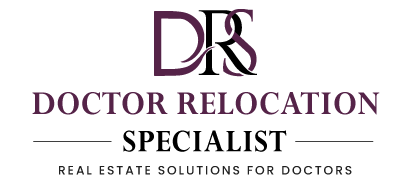Most medical practitioners face a pivotal decision when opting to relocate their practice, which can significantly impact patient retention and satisfaction. As you navigate this transition, it is imperative to weigh various factors that can influence the success of your new location. Insights from real estate experts will guide you through key considerations, from understanding demographics to assessing accessibility and meeting regulatory requirements. This article will help you make informed choices that align with both your professional goals and patient needs.

Location, Location, Location: Where to Set Up Your Practice
The right location can significantly influence the success of your medical practice. Thoroughly evaluating potential sites ensures not only patient foot traffic but also accessibility, visibility, and alignment with your practice’s specialties. An ideal location fosters growth, enhances patient satisfaction, and ultimately, ensures your practice thrives in a competitive landscape.
Assessing Community Demographics and Patient Accessibility
Your practice should reflect the needs of the community you serve. Dive into data like age distribution, income levels, and predominant health concerns of the area. Ensuring that your services cater to local demographics, while also being easily accessible via public transportation and main thoroughfares, is vital for attracting and retaining patients.
Evaluating Proximity to Competing Practices and Healthcare Facilities
Identifying the location of competing practices and healthcare facilities can provide insight into the market landscape. Look for areas that may be saturated with providers offering similar services, but also consider proximity to hospitals, urgent care centers, and specialists that can complement your practice.
Understanding the competitive landscape allows you to refine your niche and tailor your services accordingly. For instance, if numerous general practitioners inhabit a neighborhood but a shortage of pediatric or geriatric specialists exists, you may consider positioning your practice to fill that gap. Moreover, proximity to well-regarded healthcare facilities can enhance your credibility and referrals, as patients often gravitate towards locations associated with quality care. By analyzing the local competition and healthcare ecosystem, you can strategically plan your services and marketing efforts to stand out in the community.
Financial Implications: Unpacking Costs
Understanding the financial implications of relocating your medical practice is vital for making informed decisions. Costs can range from property acquisition or lease expenses to renovation and operational adjustments. Assessing the entire financial landscape—including hidden fees and ongoing expenses—will allow you to allocate your budget more effectively and avoid unexpected financial strain after the move.
Property Valuation and Lease Negotiation Tactics
Effective property valuation guarantees that you pay a fair price whether you’re purchasing or leasing. Engage a commercial real estate consultant who specializes in medical facilities to ensure a comprehensive market analysis. During lease negotiations, leverage this data to secure favorable terms, such as a rent-free period or reduced rates on tenant improvements, directly impacting your cash flow.
Understanding Zoning Laws and Their Financial Impact
Zoning laws dictate how properties can be used and can have significant financial ramifications for your practice. Compliance with these regulations may affect potential renovations and operational costs. If your new location falls under strict zoning requirements, you might face additional expenses to alter your premises or even delays in acquiring the necessary permits. This can disrupt your cash flow and revenue generation. Explore local zoning ordinances before committing to ensure that the property can accommodate your specific medical practice needs.

Infrastructure Essentials: Planning for Your Practice Needs
When relocating your medical practice, planning for infrastructure is crucial to ensure that your new space meets the requirements of your services. This includes considering not just the physical layout but also the accessibility of utilities, technology, and support systems tailored specifically for healthcare operations. A well-planned infrastructure can facilitate better workflow, enhance patient experience, and ensure compliance with healthcare regulations.
Analyzing Space Requirements for Equipment and Flow
Assessing your spatial needs involves carefully evaluating the amount and type of equipment you’ll utilize, as well as the flow of patients and staff throughout the practice. For instance, if you’re adding advanced imaging technology, ensure there’s adequate space for the equipment and any necessary operating or recovery areas, while also considering patient movement to avoid overcrowding and improve efficiency.
Ensuring Compliance with Healthcare Regulations and Standards
Compliance with healthcare regulations is not just a legal obligation; it also impacts patient safety and overall care quality. This includes adhering to standards set by the Health Insurance Portability and Accountability Act (HIPAA), Occupational Safety and Health Administration (OSHA), and local building codes. You will need to evaluate whether your new location meets requirements for patient privacy, access for individuals with disabilities, and proper storage for hazardous materials, among other considerations.
Additionally, you should engage with healthcare compliance experts who can help you navigate the complexities of local, state, and federal regulations surrounding your medical practice. This might include obtaining the necessary licenses, ensuring your building meets safety standards, and creating a workflow that aligns with regulatory guidelines. Regular audits and ongoing education for staff regarding compliance are also beneficial to ensure that your practice operates smoothly within legal parameters, thereby safeguarding both your business and your patients.
Building a Network: Collaborating with Local Providers
Establishing a robust network is vital for a successful transition when relocating your medical practice. Collaborating with local healthcare providers can enhance your service offerings and improve patient care. Engage with hospitals, specialty clinics, and community organizations to create a more integrated health ecosystem. This collaboration not only benefits your practice but also strengthens the overall health of the community you are entering.
Establishing Relationships with Referring Physicians
Forming alliances with local referring physicians is vital for a steady stream of patient referrals. Take the initiative to introduce yourself through informative meetings and networking events. By showcasing your expertise and sharing your practice’s services, you not only build trust but also help physicians recognize you as a valuable resource for their patients.
Engaging with Community Resources and Organizations
Your relocation offers an opportunity to connect with various community resources and organizations. Engaging with local nonprofits, health fairs, and public health initiatives can amplify your presence. By partnering with these entities, you can position your practice as a proactive participant in community wellness, thus attracting more patients and fostering good relationships with residents.
Incorporating community resources into your practice strategy can provide multiple benefits, including increased visibility and enhanced patient engagement. Participate in local health fairs to conduct free screenings or offer workshops tailored to specific health topics. Collaborating with organizations that focus on community health can also help you reach underserved populations, boosting your practice’s reputation while simultaneously addressing vital health issues in the area. By positioning your practice as a community ally, you create a support system that benefits both your patients and your practice’s long-term success.
Strategic Marketing: Attracting Your Target Patient Base
Relocating your medical practice involves more than just moving furniture; it requires an intentional marketing strategy to attract your desired patient demographic. You’ll need to identify who your target patients are and then craft marketing initiatives that resonate with their specific needs and preferences. Effective outreach can include digital marketing, community engagement, and targeted advertising to create awareness and attract patients to your new location.
Crafting a Compelling Brand and Online Presence
Your brand is a reflection of your practice’s values, mission, and commitment to your patients. Developing a compelling brand involves not only a memorable logo and tagline but also an engaging website that effectively communicates your services and expertise. A well-optimized online presence enhances patient trust and encourages them to choose your practice over competitors, making it imperative to invest in both quality design and consistent messaging across all platforms.
Utilizing Local SEO and Community Events for Visibility
Local SEO and participation in community events can significantly enhance your practice’s visibility in the new neighborhood. By optimizing your online content for local search terms and engaging with community initiatives, you increase your chances of being discovered by potential patients seeking healthcare services nearby.
Integrating local SEO strategies, such as incorporating location-based keywords in your website content and ensuring your practice is listed in local directories, will help improve your search engine rankings. Additionally, engaging with the community through health fairs, workshops, or sponsorship of local events not only increases visibility but also builds trust and rapport with potential patients. Such initiatives can position your practice as a community resource, making patients more likely to choose your services over others. By blending both SEO and hands-on community involvement, you can effectively broaden your reach and cultivate a strong patient base in your new location.
Final Words
With this in mind, when relocating your medical practice, it’s vital to evaluate key factors such as location, accessibility, and the demographics of your patient base. Engaging with real estate experts can provide valuable insights that align with your specific practice needs, ensuring a smooth transition. Take the time to conduct thorough market research, assess competition, and consider the potential for growth in your new area. By focusing on these aspects, you can make a well-informed decision that supports the long-term success of your practice.

